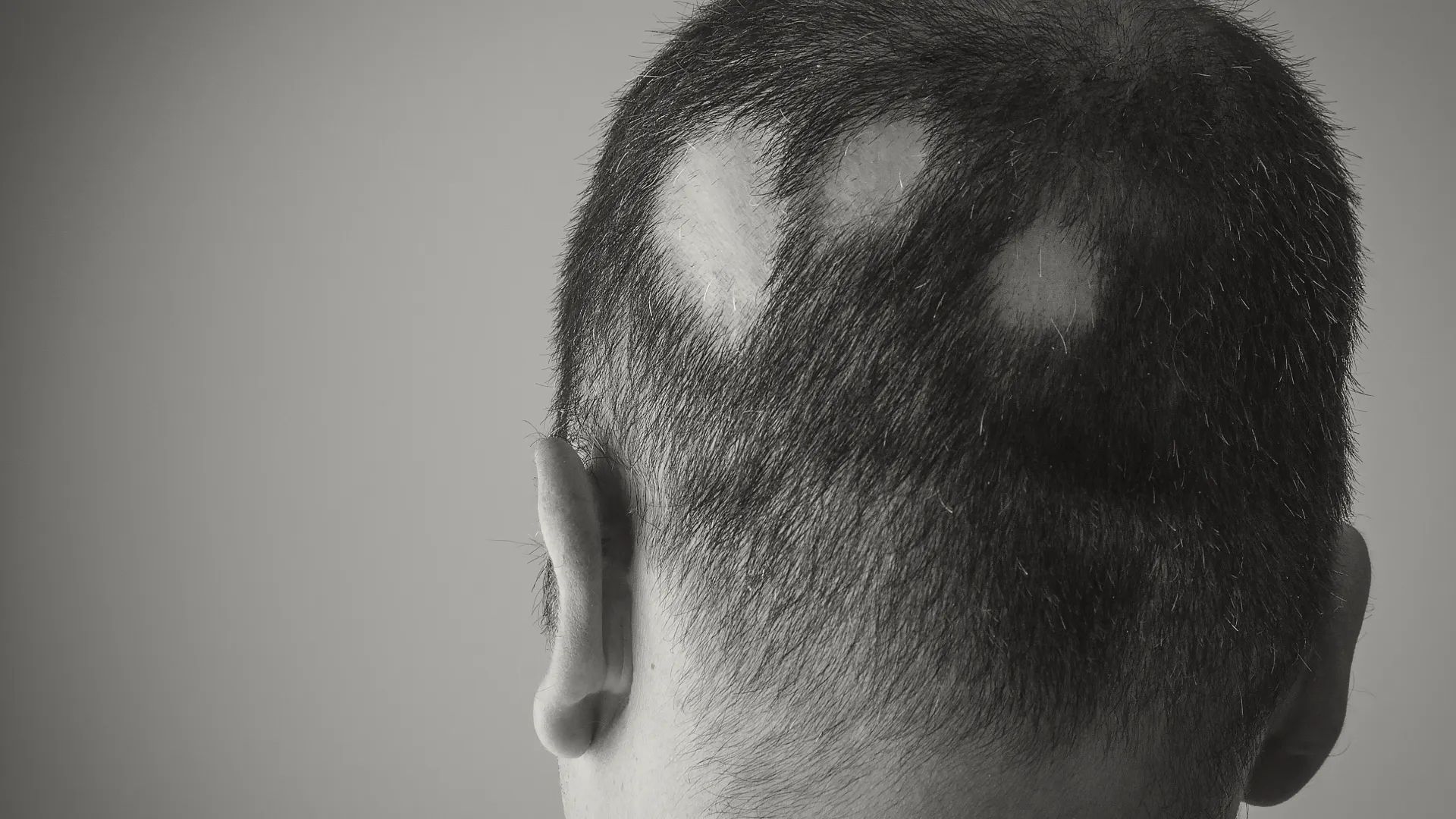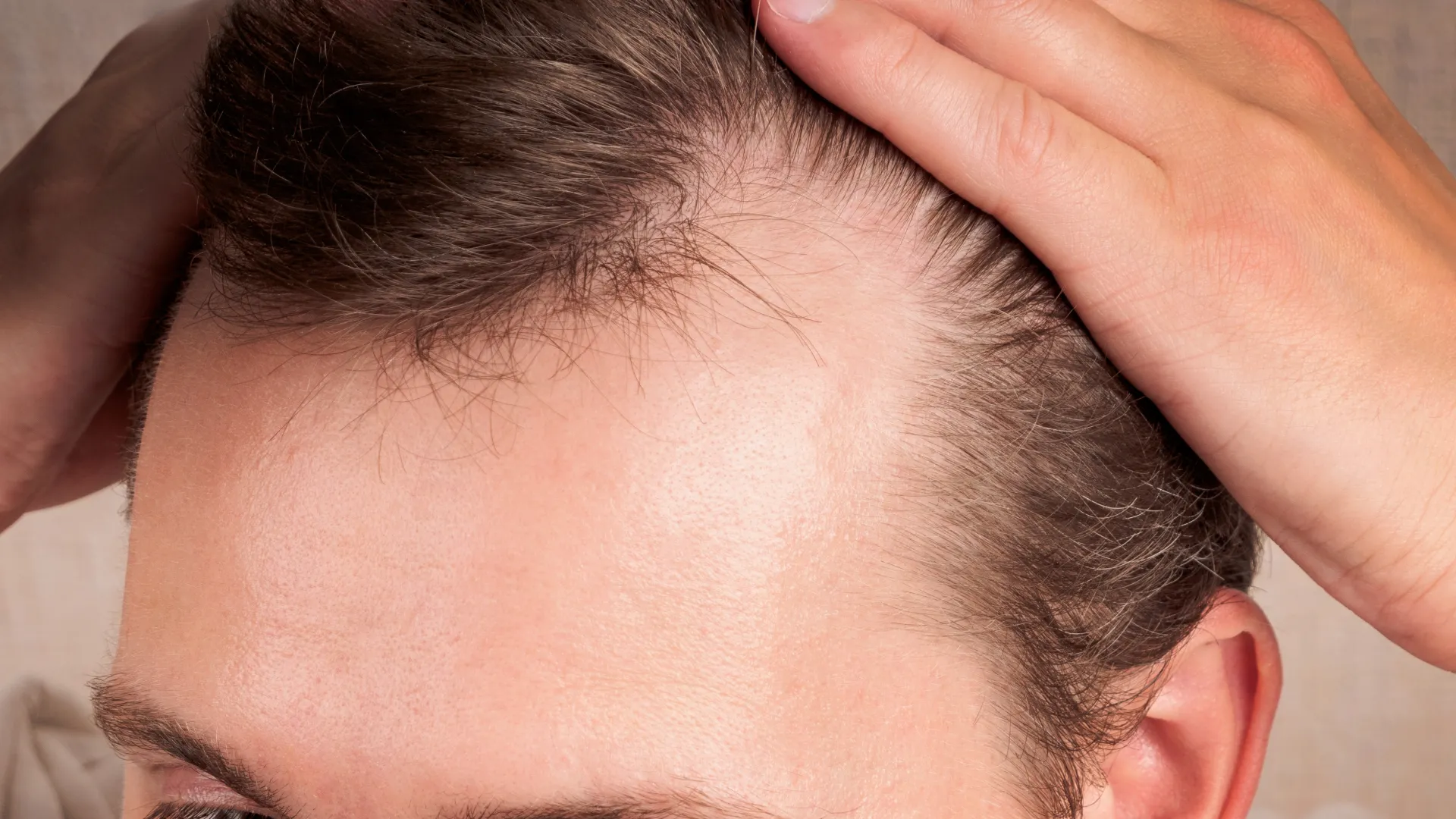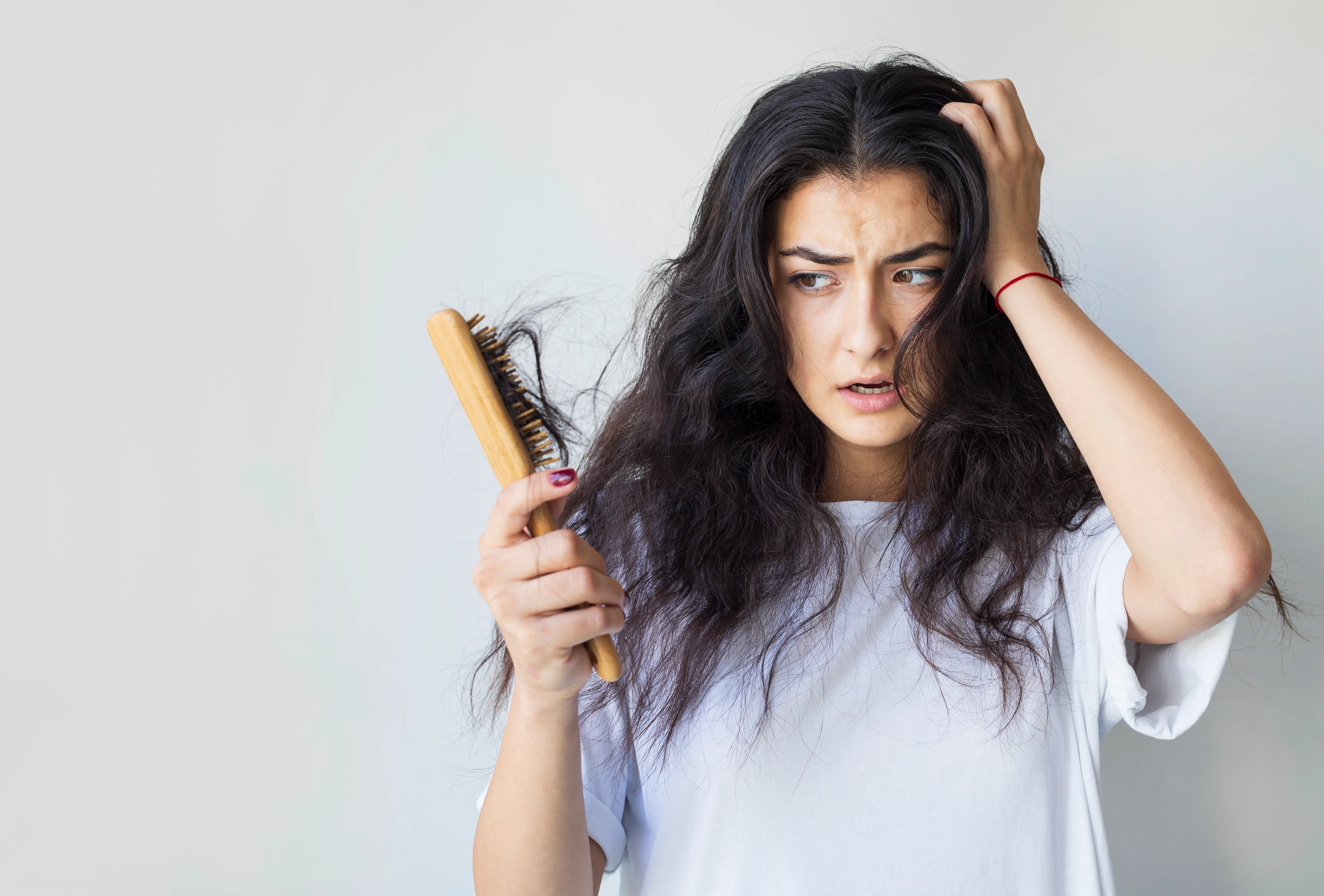Alopecia areata
Alopecia areata is an autoimmune condition that leads to hair loss on the scalp or other areas of the body. It occurs when the immune system mistakenly attacks the hair follicles. The exact cause of this immune response is not fully understood, but genetic and environmental factors seem to play a role.
Types of alopecia areata
- Alopecia areata: One or more round patches of hair loss.
- Alopecia totalis: Complete loss of hair on the scalp.
- Alopecia universalis: Total loss of hair on both the scalp and body, including eyelashes and eyebrows.
Symptoms
- Sudden hair loss in round or oval patches on the scalp.
- Hair loss may also be observed in other areas (such as beard, eyebrows, eyelashes, and less frequently in other hairy regions of the body).
- There may be a tingling or itching sensation before the appearance of the patches.
- Nails: They may exhibit small indentations (pitting), white spots or lines, appear rough and dull, become thin, and break easily. Rarely, nails may change shape or fall off. Sometimes, nail changes are the first or only sign of alopecia areata. Nail abnormalities occur in 10-20% of patients.
Comorbidities
Alopecia areata may be associated with several other conditions:
- Thyroid disorders: Conditions such as Hashimoto’s thyroiditis and Graves’ disease are common in individuals with alopecia areata.
- Vitiligo: This skin condition, characterized by loss of skin pigment, often coexists with alopecia areata.
- Psoriasis
- Asthma, atopic dermatitis
- Smoking
Diagnosis
Diagnosis is primarily clinical, based on the appearance of hair loss. It may involve:
- Trichoscopy: A dermatoscopic examination of the scalp to assess the morphology of the hair and follicles. A dermatoscopic examination of the scalp is conducted to assess the morphology of the hairs and follicles. A characteristic feature is the presence of “exclamation mark” hairs (often, there are a few short hairs within the bald spots that taper at the base like an exclamation mark).
- Biopsy: In rare cases, a small skin sample may be taken to rule out other conditions.
Treatment
Several treatments may help manage symptoms and promote hair regrowth:
- Topical corticosteroids: Applied directly to areas of hair loss to reduce inflammation. Application can be done by the doctor via local injections or by the patient at home in the form of cream or lotion (less effective).
- Minoxidil: Topical solutions that may help stimulate hair growth.
- Anthralin
- Immunotherapy: Involves applying chemicals to the scalp, which can redirect the immune response and encourage hair regrowth through irritation.
- PRF (Platelet-Rich Fibrin) therapy: A newer treatment that uses the patient’s blood to promote hair growth by releasing growth factors directly to the follicles. Studies indicate it is a promising treatment for alopecia areata.
- JAK inhibitors: New oral medications that have shown very encouraging results in treating alopecia areata. Their use is recommended for adults with severe alopecia areata.
Conclusion
Alopecia areata is a complex condition that requires a multifaceted approach to treatment and management. If you are experiencing hair loss or suspect you may have alopecia areata, our dermatology clinic is here to help. We offer comprehensive evaluations and the latest treatment options tailored to your needs. Contact us today to schedule a consultation and take the first step toward restoring your hair and confidence.


